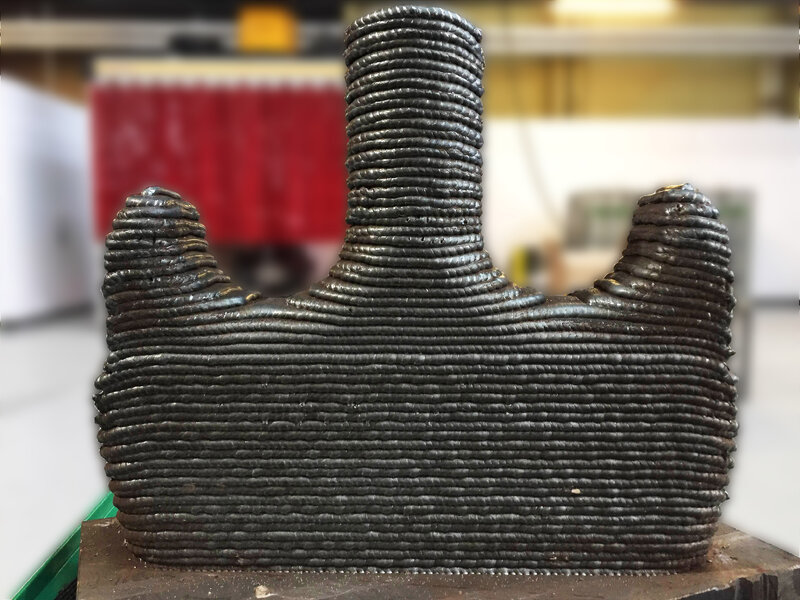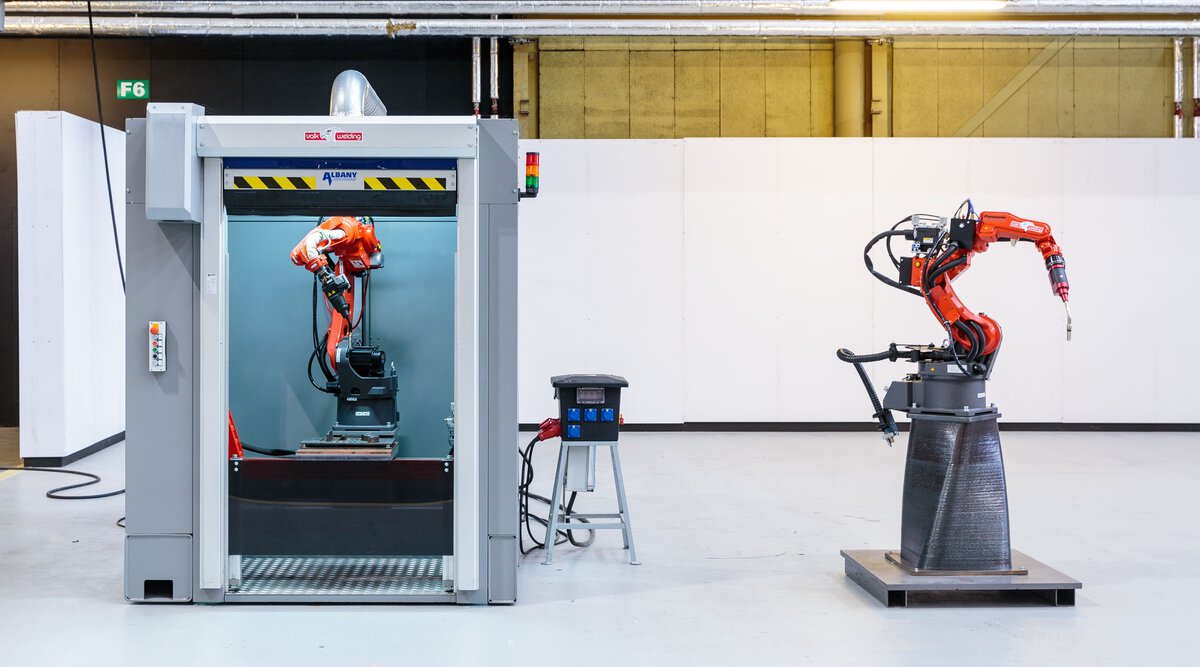Vincent Wegener, RAMLABin toimitusjohtaja: "Nykyiset 3D-metallitulostimet ovat rajoitettuja suurimman järjestelmän maksimimittoihin ja niihin liittyy korkeat jauhekustannukset. Mutta hitsausrobotit pystyvät hitsaamaan 1- useita kiloja materiaalia tunnissa käyttämällä tavallista hitsauslankaa. Tämä mahdollistaa suurten osien tuottamisen alhaisemmilla hinnoilla ja lyhyemmässä ajassa. RAMLABissa tutkimme nyt tämän mahdollisuuksia tiiviissä yhteistyössä strategisten kumppaneiden, kuten Valk Weldingin ja Air Liquiden sekä Rotterdamin alueen satamiin liittyvien yritysten kanssa. Huisman ja IHC olivat ensimmäiset, jotka liittyivät mukaan."
Laivan potkuri
Yksi ensimmäisistä osista, joka onnistuneesti tulostettiin tällä menetelmällä, oli kaksoiskaareva osa, joka oli inspiroitu laivan potkurista. Vincent Wegener: "Tällainen osa normaalisti koneistettaisiin ja viimeisteltäisiin valusta. Pelkän valun toimittaminen kestäisi viikkoja tai muutamia kuukausia, koska tämä on yksittäinen kappale, joka yleensä täytyy tulla ulkomailta. Hitsausrobotin avulla teimme sen muutamassa tunnissa, ja ainoa mitä piti tehdä, oli hioa ja kiillottaa se."
Laadun takaaminen
Vincent Wegenerin mukaan valujen laatu ei ole aina taattu. "Mutta robottihitsauksessa se on! Valk Weldingin robotit tuottavat tarvittavat tiedot hitsin laadun arvioimiseksi. Voit välittää nämä tiedot asiakkaalle viitteeksi."
Yhteistyö
Vincent Wegener: "Olemme jo tehneet esityön ja toimittaneet tarvittavat tiedostot suurelle nostokoukulle, jonka Huisman tulostaa Valk Weldingin roboteilla Tšekin tehtaallaan. Huisman on yksi kumppaneista, joka tunnistaa suuren potentiaalin 3D-metallitulostuksessa hitsausroboteilla ja suunnittelee tutkimaan ja mukauttamaan uusimpia tuotantokehityksiä varhaisessa vaiheessa. Kaikki kumppanit antavat tietoa vaatimuksistaan ja kokemuksistaan, jotta voimme tukea toisiamme tässä prosessissa. Useat yritykset merenkulun ja offshore-sektorilla voivat tietysti liittyä RAMLABiin."




